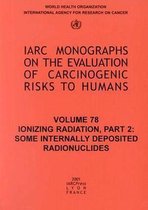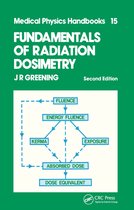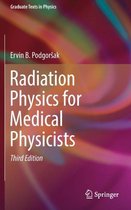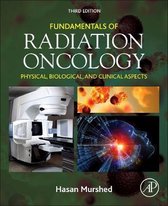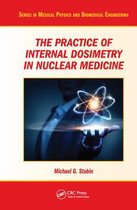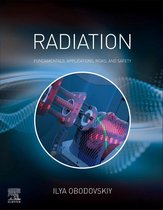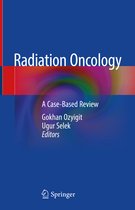Medical Radiation Dosimetry Theory of Charged Particle Collision Energy Loss
Afbeeldingen
Sla de afbeeldingen overArtikel vergelijken
- Engels
- Hardcover
- 9781447154020
- 29 november 2013
- 622 pagina's
Samenvatting
Medical Radiation Dosimetry: Theory of Charged Particle Collision Energy Loss provides a uniquely required advanced, comprehensive and definitive theoretical description of the physics of charged particle collision energy loss and the role that it plays in the clinical radiation dosimetry resulting from exposure to ionising radiation.
Medical Radiation Dosimetry: Theory of Charged Particle Collision Energy Loss is both an advanced mathematical and physics treatise and an essential reference volume for the medical physics graduate student and the medical radiation physicist working in the field of clinical and research radiation dosimetry. It will assist both audiences in both the understanding of the genesis of the numerical data provided in multiple technical reports and publications, and of the limitations of these data.
Accurate radiation dosimetry is a requirement of radiation oncology, diagnostic radiology and nuclear medicine. It is necessary so as to satisfy the needs of patient safety, therapeutic and diagnostic optimisation, and retrospective epidemiological studies of the biological effects resulting from low absorbed doses of ionising radiation. The radiation absorbed dose received by the patient is the ultimate consequence of the transfer of kinetic energy through collisions between energetic charged particles and atoms of the tissue being traversed. Thus, the ability of the medical physicist to both measure and calculate accurately patient dosimetry demands a deep understanding of the physics of charged particle interactions with matter. Interestingly, the physics of charged particle energy loss has an almost exclusively theoretical basis, thus necessitating an advanced theoretical understanding of the subject in order to apply it appropriately to the clinical regime.
Each year, about one-third of the world's population is exposed to ionising radiation as a consequence of diagnostic or therapeutic medical practice. The optimisation of the resulting radiation absorbed dose received by the patient and the clinical outcome sought, whether diagnostic or therapeutic, demands accuracy in the evaluation of the radiation absorbed doses resulting from such exposures. This requirement arrises primarily from two broadly-encompassing factors:
- The requirement in radiation oncology for a 5% or less uncertainty in the calculation and measurement of absorbed dose so as to optimise the therapeutic ratio of the probabilities of tumour control and normal tissue complications; and
- The establishment and further refinement of dose reference levels used in diagnostic radiology and nuclear medicine to minimise the amount of absorbed dose for a required degree of diagnostic benefit.
The radiation absorbed dose is the outcome of energeticcharged particles decelerating and transferring their kinetic energy to tissue. The calculation of this energy deposition, characterised by the stopping power, is unique in that it is derived entirely from theoretical principles. This dominant role of the associated theory makes its understanding of fundamental to the calculation of the radiation absorbed dose to the patient.
The theoretical development of charged particle energy loss recognised in medical physics textbooks is in general limited to basic derivations based upon classical theory, generally a simplified form of the Bohr theory. More advanced descriptions of, for example, the Bethe-Bloch quantum result usually do not go beyond the simple presentation of the result without full explanation of the theoretical development of the theory and consideration of its limitations, its dependencies upon the Born perturbation theory and the various correction factors needed to correct for the failures of that Born theory at higher orders. This is not appropriate for a full understanding of the theory that its importance deserves. The medical radiation physicist should be aware of the details of the theoretical derivations of charged particle energy loss in order to appreciate the levels of accuracy in tabular data provided in reports and the calculation methodologies used in modern Monte Carlo calculations of radiation dosimetry.
Productspecificaties
Inhoud
- Taal
- en
- Bindwijze
- Hardcover
- Oorspronkelijke releasedatum
- 29 november 2013
- Aantal pagina's
- 622
- Illustraties
- Nee
Betrokkenen
- Hoofdauteur
- Brian J Mcparland
- Hoofduitgeverij
- Springer London Ltd
Overige kenmerken
- Editie
- 2014 ed.
- Extra groot lettertype
- Nee
- Product breedte
- 162 mm
- Product hoogte
- 32 mm
- Product lengte
- 244 mm
- Studieboek
- Ja
- Verpakking breedte
- 162 mm
- Verpakking hoogte
- 32 mm
- Verpakking lengte
- 244 mm
- Verpakkingsgewicht
- 1043 g
EAN
- EAN
- 9781447154020
Je vindt dit artikel in
- Categorieën
- Taal
- Engels
- Studieboek of algemeen
- Algemene boeken
- Beschikbaarheid
- Leverbaar
- Select-bezorgopties
- Vandaag Bezorgd, Avondbezorging, Zondagbezorging, Gratis verzending
Kies gewenste uitvoering
Prijsinformatie en bestellen
De prijs van dit product is 230 euro en 34 cent. De meest getoonde prijs is 238 euro en 99 cent. Je bespaart 4%.- Prijs inclusief verzendkosten, verstuurd door bol
- Ophalen bij een bol afhaalpunt mogelijk
- 30 dagen bedenktijd en gratis retourneren
- Dag en nacht klantenservice
- Vandaag nog in huis (bestel ma-vr voor 12:00, bezorging tussen 17:00 en 22:00)
- Doordeweeks ook ’s avonds in huis
- Ook zondag in huis (bestel voor za 23:59)
Rapporteer dit artikel
Je wilt melding doen van illegale inhoud over dit artikel:
- Ik wil melding doen als klant
- Ik wil melding doen als autoriteit of trusted flagger
- Ik wil melding doen als partner
- Ik wil melding doen als merkhouder
Geen klant, autoriteit, trusted flagger, merkhouder of partner? Gebruik dan onderstaande link om melding te doen.

